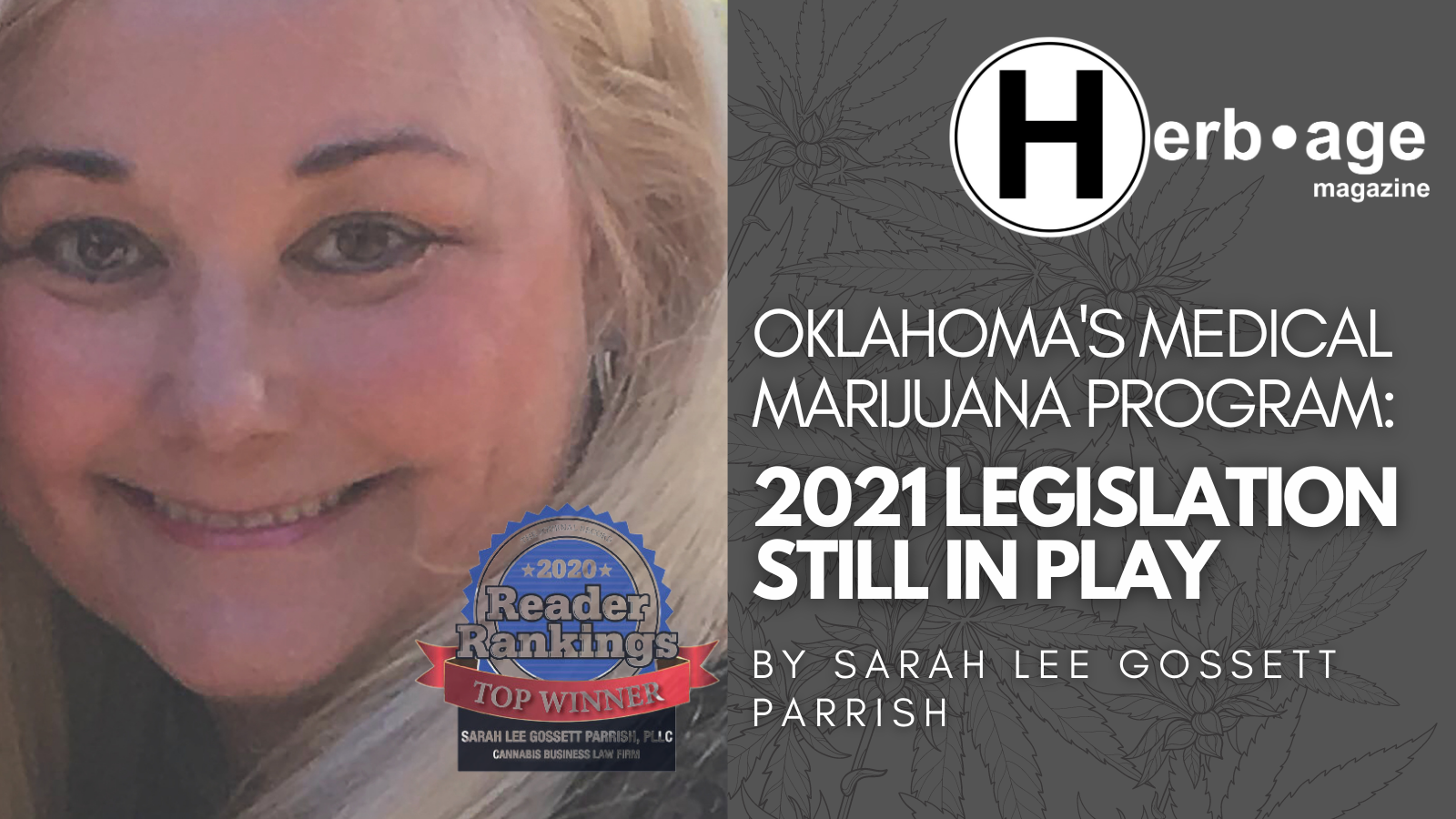An Overview of the USDA’s Interim Rules
by Sarah Lee Gossett Parrish, Cannabis Lawyer1
The 2018 Farm Bill repealed Section 7606 of the Agricultural Act and legalized production of industrial hemp across the country, removing it from the Controlled Substances Act’s definition of “marijuana” and from Schedule I, and vesting the U.S. Department of Agriculture (“USDA”) with regulatory authority over hemp, federally speaking.
States Still in the Game
In the wake of the 2018 Farm Bill, Oklahoma, like many states, enacted new legislation to amend the state agricultural pilot program and sync Oklahoma’s hemp laws to federal law. Governor Stitt signed the 2019 Oklahoma Industrial Hemp Program in May 2019, amending the 2018 pilot program to allow any authorized person to obtain a license for the purpose of growing and cultivating industrial hemp and removing restrictions on cultivation of industrial hemp and prior limitations that hemp must be grown for research and development. The 2019 Hemp Program also addresses handling and processing of industrial hemp, provides for interstate and intrastate shipment, and vests the Oklahoma State Board of Agriculture with authority to prepare any necessary plans and reports required by the USDA for approval.
The USDA has now implemented its interim final rule, effective October 31, 2019 through November 1, 2021, which clarifies monitoring, testing, and regulation of hemp under federal law. However, hemp growers must still have a license or other authorization from a state hemp program, tribal program, or, beginning November 30, 2019, the USDA hemp program—which will issue licenses to those in jurisdictions where a plan has not been approved or no plan has been submitted.
2
The final interim rule is limited to industrial hemp production under the 2018 Farm Bill; it does not impact hemp being cultivated under 2014 Farm Bill programs.
What The Interim Rule Provides
In a lengthy document published in Vol. 84, No. 211/October 31, 2019 of the Federal Register, the USDA outlines how it will approve plans submitted by States and Indian Tribes for domestic production of hemp and establishes a federal plan for those in states or tribal territories where there is no USDA-approved plan. Public comment will be accepted for 60 days, and additional guidance about specific rule provisions will be forthcoming. The complete text can be accessed at https://www.ams.usda.gov/rules-regulations/hemp/rulemaking-documents.
Hemp Defined.
Federal law defines hemp as “Cannabis Sativa L. with THC concentration of 0.3% or less”. Plants with higher THC concentrations are deemed to be marijuana and remain a controlled substance under federal law. The interim final rule addresses state licensing of hemp farmers, maintaining and reporting of information, methods to sample and test plants for THC, and disposal of plants with higher THC levels that render them “marijuana”.
Hemp for All; Testing; “Margin of Error”.
The interim rule opens the door for hemp production in all states—even those without Hemp Pilot Programs. It requires background checks to prove those with direct or indirect financial interests in a hemp producing entity do not have felony convictions. It also standardizes sampling and testing procedures, requiring the use of post decarboxylation or similar reliable methods. Laboratories must be registered with the Drug Enforcement Administration and must calculate a “measurement of uncertainty,” i.e., a margin of error, when they report THC test results. This allows flexibility for growers to sell crops that test slightly above the 0.3% limit. Growers
3
cultivating plants with THC levels of up to 0.5% need not fear retribution from the USDA, provided that they can show they were, in good faith, trying to grow hemp. However, federal law still mandates destruction of these crops. Thus, growers with lab results evidencing biomass that exceeds the acceptable 0.3% THC level must dispose of the entire lot (defined as “a contiguous area in a field, greenhouse, or indoor growing structure containing the same variety or strain of cannabis throughout”) represented by the sample. The disposal process must be documented and reported to USDA.
Hemp flower material must be tested via the sampling process within 15 days of harvest by a USDA-approved sampling agent. States may submit alternative protocols for sampling and testing if such protocols would yield similarly reliable results.
What’s the Take-Away?
Industrial hemp is baaaccckkk! Perhaps now, it is here to stay. We can only hope and pray!
Information contained herein provides general information related to the law and does not provide legal advice. It is recommended that readers consult their personal lawyer if they want legal advice. No attorney-client or confidential relationship exists or is formed between you and Ms. Parrish as a result of this article.




